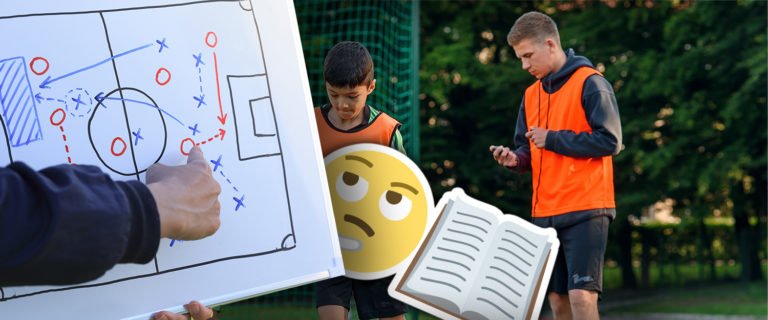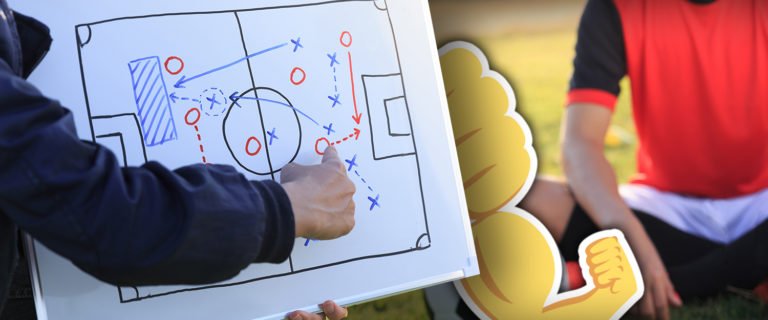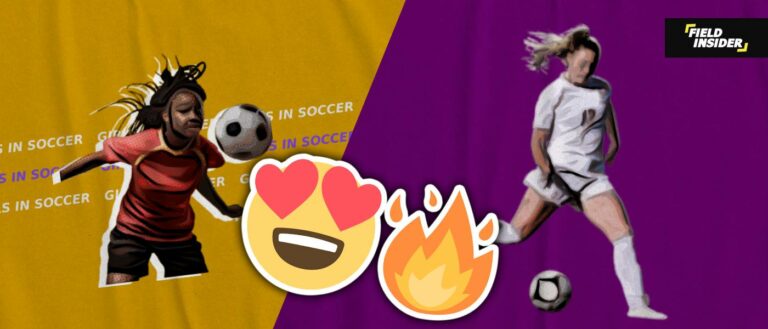How Do Footballers Train Legs? A Leg Training Guide
Football, known as soccer in some regions, is a game that demands exceptional physical prowess, especially from the waist down. As a former player myself, I understand the significance of leg training for footballers.
It’s not just about building strength; it’s about cultivating power, agility, and endurance. In this comprehensive guide, we’ll delve into the specifics of leg training in football, providing a rich blend of information and professional insights.
Key Takeaways
| Key Takeaways | Details |
|---|---|
| Leg Strength’s Importance | Essential for power, speed, and endurance in football. |
| Core Exercises | Squats, lunges, deadlifts – vital for building leg muscles. |
| Specialized Workouts | Tailored routines targeting specific muscle groups. |
| Nutrition and Recovery | Crucial for muscle growth and injury prevention. |
| Agility and Speed Training | Complements leg strength for overall performance. |
| Injury Prevention | Strategies to reduce the risk of leg injuries. |
| Professional Insights | Testimonials from top athletes on leg training. |
The Fundamentals of Leg Training For Footballers
Leg strength is not just beneficial; it’s a necessity for footballers. It’s the foundation of a player’s ability to sprint, jump, and maintain stamina throughout a match.
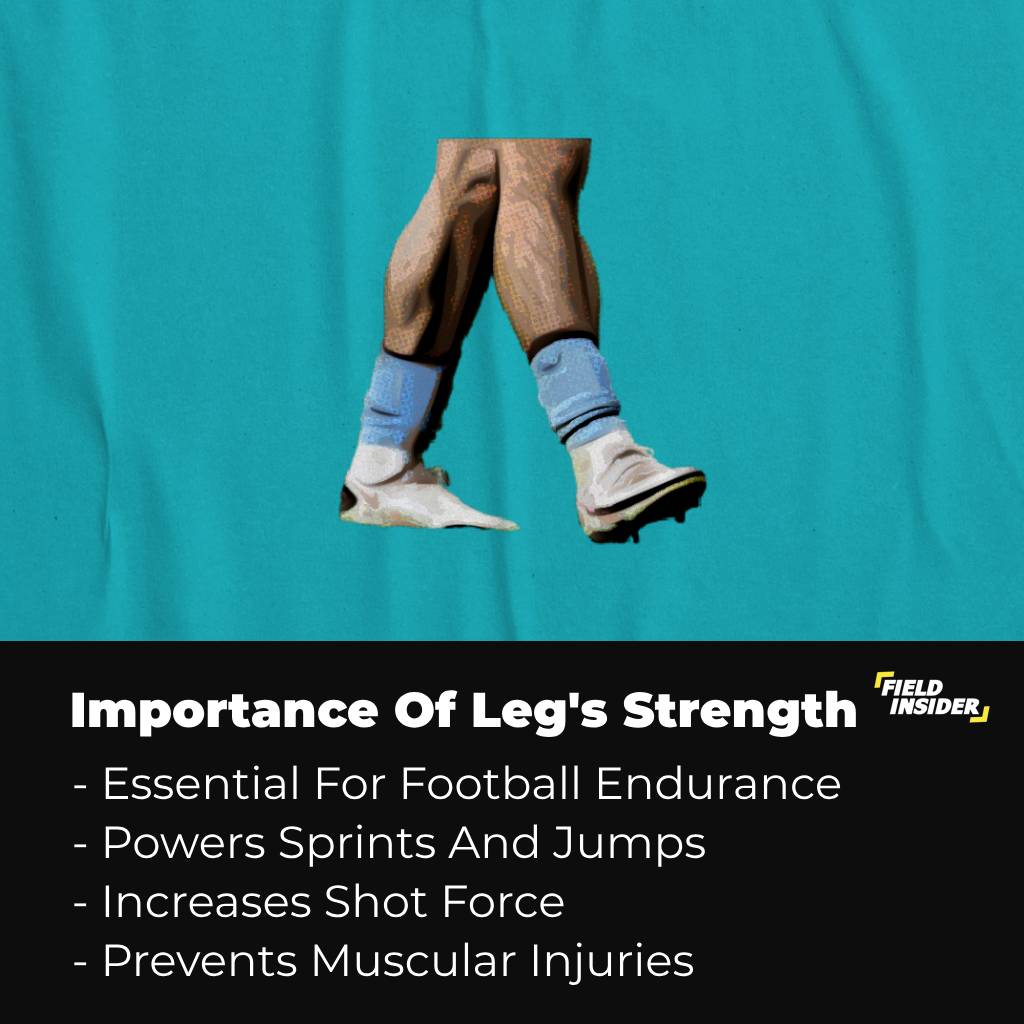
Power in Play
Leg strength is fundamental for a footballer’s power on the pitch. Strong legs enable players to accelerate quickly, jump higher, and strike the ball with more force.
This power is not just about sheer strength; it’s a combination of muscle mass and explosive energy, crucial for outperforming opponents during crucial moments in a game.
Speed and Agility
Speed and agility are direct outcomes of well-trained leg muscles. Footballers with strong legs move faster and change direction more swiftly, giving them a significant advantage in both attacking and defending scenarios.
It’s the quick bursts of speed, coupled with the ability to maneuver around opponents, that often make the difference between winning and losing.
Endurance and Stamina
Leg strength is also synonymous with endurance in football. Players with stronger legs can maintain high levels of performance throughout the game, which is vital in a sport where a single match can involve several kilometers of running.
Endurance training is not only about lasting longer but also about maintaining quality of play, ensuring that players are as effective in the 90th minute as they are in the first. For more on endurance, the physical training in football article offers extensive insights.
Impact on Overall Performance
The overall performance of a footballer is significantly influenced by their leg strength. It impacts everything from shooting power to injury prevention.
Stronger legs mean a player can hit harder shots, make more effective tackles, and resist challenges better. This comprehensive approach to training is crucial for any aspiring footballer, as discussed in our guide on becoming a professional football player.
Injury Prevention
Strong legs are not just about performance; they’re also about safety. Well-conditioned leg muscles and tendons are less prone to injuries like strains, sprains, and tears.
Incorporating strength training into a regular fitness routine is a key strategy in reducing the risk of common football injuries. Our detailed article on injury prevention in football provides more information on this critical aspect.
Leg Training Exercises for Footballers
Squats: Foundation of Leg Strength
Squats are the cornerstone of leg training for footballers, targeting the quadriceps, hamstrings, and glutes. They build the foundational strength required for jumping, sprinting, and tackling.
A balanced squat routine not only improves muscle mass but also enhances joint stability, crucial for injury prevention. For a deeper understanding of how squats benefit football-specific movements, explore our article on football training exercises at home.
Lunges: Enhancing Balance and Stability
Lunges are pivotal for developing unilateral strength and balance, vital for footballers who frequently change direction and pace. They work each leg individually, reducing muscle imbalances and enhancing overall stability.
This exercise is especially beneficial for players looking to improve their agility on the field, as detailed in our guide on 5-a-side attacking strategies.
Deadlifts: Targeting Core and Back
Deadlifts are integral for strengthening the back, glutes, and hamstrings. They support a footballer’s ability to maintain posture under pressure and provide the power needed for explosive movements.
Proper deadlift technique is crucial to maximize benefits and minimize injury risks, aligning with our commitment to professional and safe training methods. For more on core strengthening exercises, our article on individual football training offers valuable insights.
Specialized Workouts for Footballers
Tailored Routines for Position-Specific Strength
Footballers require customized workout plans that cater to their specific position on the field. For instance, a defender might focus more on vertical jumping exercises, while a midfielder might concentrate on endurance training.
These tailored routines ensure that each player develops strength in areas most relevant to their role. Our analysis of various football positions, like in the attacking football positions article, provides a deeper understanding of these requirements.
Targeting Specific Muscle Groups
Effective leg workouts for footballers target specific muscle groups to enhance performance in particular aspects of the game. For example, calf exercises improve sprinting ability, while thigh workouts increase shot power.
Incorporating Variety and Progression
A diverse training regimen that progressively increases in intensity is key to continuous improvement. Footballers should vary their exercises, reps, and weights to continually challenge their muscles and prevent plateaus.
This approach aligns with professional training standards, ensuring players develop comprehensively. For more on creating effective training programs, refer to our in-depth guide on plan a football training session.
Nutrition and Recovery for Footballers
Importance of Nutrition for Muscle Growth
Proper nutrition is crucial for muscle recovery and growth. A diet rich in proteins, healthy fats, and carbohydrates fuels muscle repair and builds strength.
This dietary approach is essential for footballers looking to maximize the benefits of their leg training. For comprehensive nutritional guidelines, our article on nutrition in football offers practical advice.
Balanced Diet for Optimal Performance
Maintaining a balanced diet is essential for footballers. It’s not just about the quantity of food but the quality and timing as well.
Eating the right foods at the right times supports muscle growth, energy levels, and overall health. For more detailed information on diet and performance, check out our piece on football essentials for kids.
Recovery and Injury Prevention
Recovery is as important as the workout itself. Adequate rest, proper hydration, and post-exercise nutrition are key to preventing injuries and ensuring muscles rebuild stronger.
Our commitment to safe and professional training extends to recovery practices, thoroughly covered in our article on footballers’ recovery techniques.
Agility and Speed Training for Footballer’s Legs
Enhancing Agility Through Specific Drills
Agility is a critical component in football, allowing players to navigate the field with precision and speed. Agility drills, such as ladder runs and cone drills, are essential for improving quick footwork and directional changes.
These exercises not only increase a player’s ability to evade opponents but also enhance overall coordination.
Speed Training: A Key to On-Field Success
Speed is a game-changer in football. Training that focuses on sprinting technique and explosive power can significantly increase a player’s pace. Interval training and plyometrics are examples of exercises that enhance leg speed.
Understanding the importance of speed in various match situations, can provide additional context to this training.
Integrating Strength with Speed and Agility
While strength is fundamental, integrating it with speed and agility training leads to more balanced and effective performance.
Footballers need to ensure that their leg strength training complements their agility and speed workouts, creating a harmonious balance. The football fitness coach section on our site delves deeper into creating integrated training programs.
Impact of Training Type on Squat Jump Performance Improvement
In a study published on May 2016 – Volume 30 – Issue 5 of the Journal of Strength and Conditioning Research, the most effective strength training exercises for enhancing athletic jump performance were closely observed.
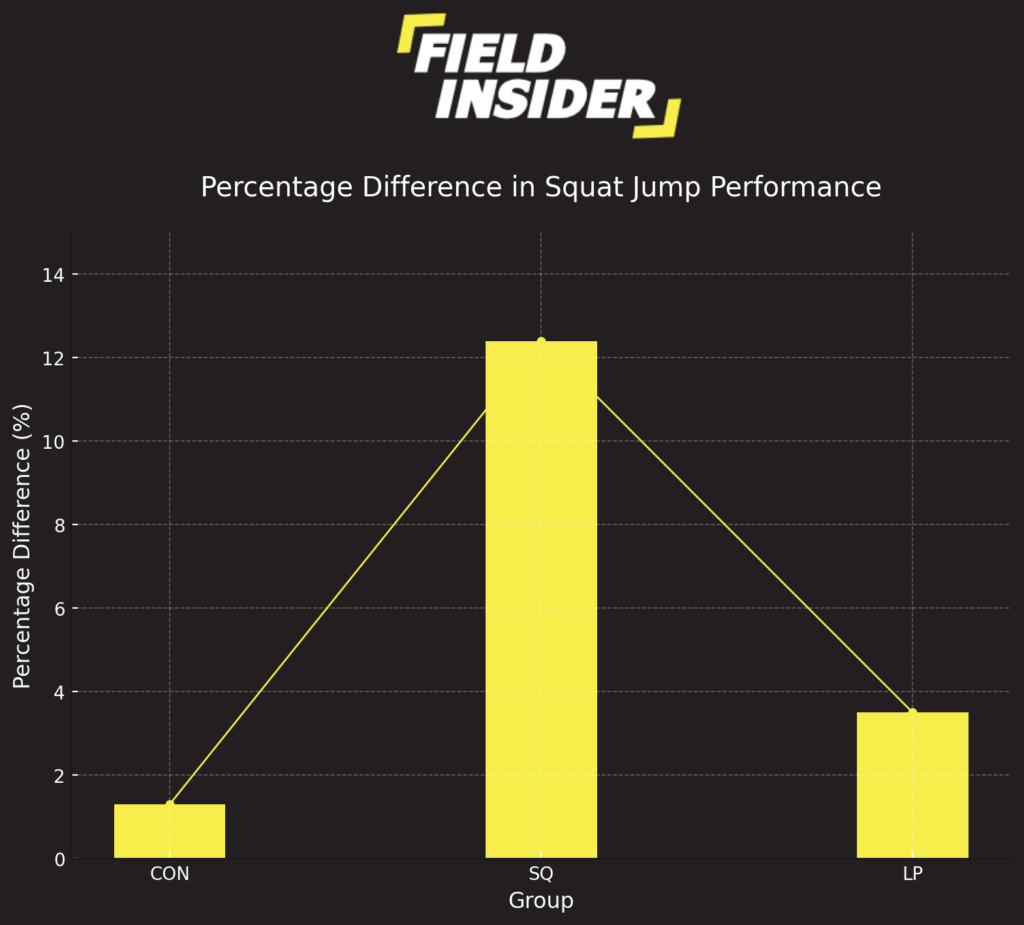
The graph illustrates the percentage increase in squat jump performance across three distinct groups over an 8-week training period. The control group (CON), which did not engage in targeted strength training, showed a marginal increase of 1.3%, suggesting minimal natural improvement over time.
In stark contrast, the squat training group (SQ) achieved a remarkable 12.4% enhancement in performance, underscoring the efficacy of squat exercises.
Meanwhile, the leg-press group (LP) saw a modest 3.5% improvement, indicating some benefit, albeit significantly less than that of the squat training group.
This data visually reinforces our conclusion that squat exercises are superior to leg presses for athletes aiming to significantly improve their jump performance.
what are The Key Leg Muscles?
The quadriceps, hamstrings, calves, and glutes are the most important muscles in the legs. Each of these muscles helps football players in different ways.
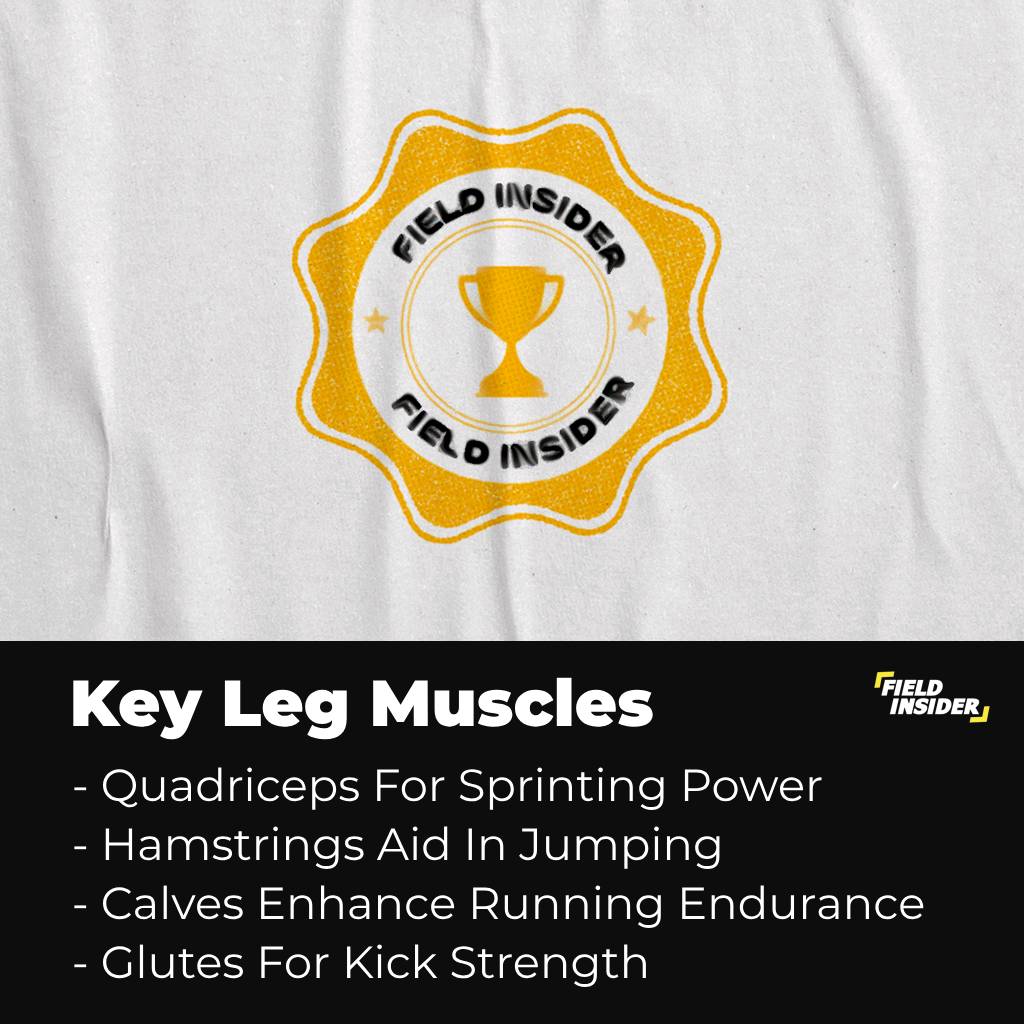
The Quadriceps
The quadriceps are a group of four muscles located on the front of the thigh. Directly connecting to the knee joints and muscles., quads are essential for running, jumping, and kicking. They are also the primary contributors to shooting power. Quadriceps are frequently large and defined in players.
THE HAMSTRING
The hamstrings are a group of three posterior thigh muscles that run down the back of the thigh. The hamstrings of football players are subjected to a great deal of stress because they are the primary component in propelling players forward during short, sudden sprints.
Because they are subjected to a great deal of force, hamstring injuries are common. Football injuries account for approximately 40% of all injuries in football.
THE CALF MUSCLES
The calf muscles are located on the back of the lower part of the leg. They are constantly engaged in a match or training session, from running, jumping, and particularly sprinting. Again, footballers generally have large, well-developed, and defined calves.
THE GLUTES
The gluteal muscles act as stabilizers, giving the pelvis and hips strength and balance. They not only help to increase lower-body strength, but they also play an important role in injury prevention.
Injury Prevention and Rehabilitation in Football
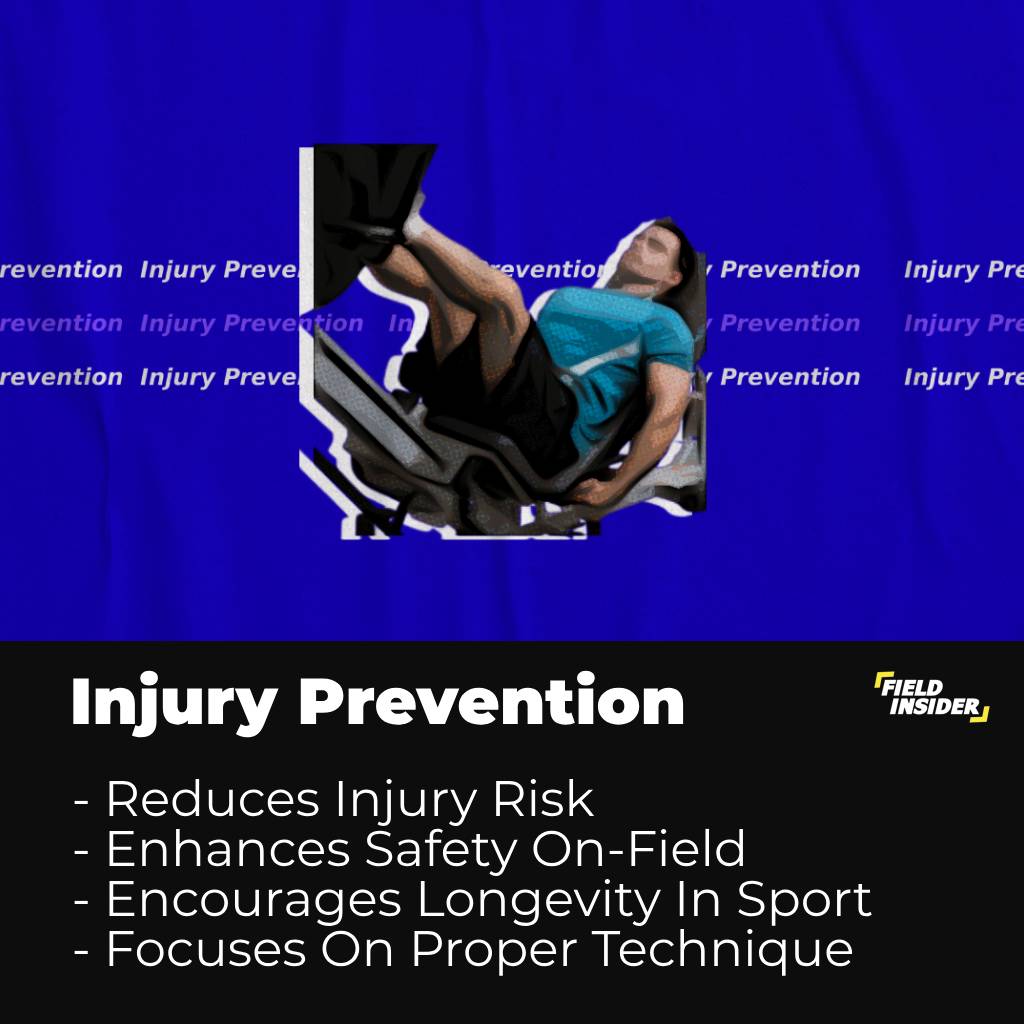
Addressing the Risk of Leg Injuries
Football is a high-impact sport, and the risk of leg injuries is significant. Implementing strategies like proper warm-ups, cool-downs, and stretching exercises can dramatically reduce the risk of injury.
Focusing on technique and form during training sessions is also crucial for safety. For a comprehensive guide on injury prevention, refer to our detailed analysis in injury prevention in youth football.
Rehabilitation Exercises for Faster Recovery
When injuries do occur, proper rehabilitation is key to a swift and effective recovery. Exercises that focus on regaining strength, flexibility, and range of motion in the injured area are essential.
It’s important to approach rehabilitation with patience and professionalism, ensuring a safe return to the field. Our resources on rehabilitation in football provide in-depth guidance on this process.
Maintaining a Professional Approach to Safety
The professional approach to training and recovery in football is non-negotiable. It involves understanding the body’s limits and recognizing the signs of overtraining and fatigue.
Educating players on the best practices for injury prevention and recovery is part of our commitment to professional, safe sportsmanship. For more on this, our article on youth football safety is a valuable resource.
Testimonials from Professional Footballers
Insights from Top Athletes on Leg Training
Hearing directly from professional footballers about their leg training routines offers valuable insights and real-world perspectives. These testimonials provide an inside look into the training regimens of elite athletes, showcasing the practical application of the techniques discussed.
Cristiano Ronaldo’s Approach to Leg Training
Cristiano Ronaldo, known for his incredible athleticism and longevity in the sport, attributes much of his success to his rigorous leg training regimen. Ronaldo’s approach to leg training is multifaceted, encompassing strength, agility, and speed exercises, which are integral to his performance on the pitch.
- Strength Training: Ronaldo incorporates a variety of leg exercises into his routine, including squats, lunges, and deadlifts. He focuses on building muscle strength in his legs to enhance his jumping ability and shot power. His training involves both weight-bearing exercises and bodyweight workouts.
- Speed and Agility Drills: Ronaldo’s training goes beyond mere strength exercises. He regularly engages in plyometric drills that improve his explosive power and speed. These include box jumps, hurdle jumps, and sprinting exercises
- Endurance Training: Recognizing the importance of endurance in football, Ronaldo’s leg training also includes cardiovascular exercises. He integrates high-intensity interval training (HIIT) into his routine, which aids in building stamina, allowing him to maintain peak performance.
- Recovery and Nutrition: Ronaldo places a strong emphasis on recovery and nutrition. He follows a strict diet that supports muscle growth and recovery, rich in protein, carbohydrates, and healthy fats. Additionally, he prioritizes rest and recovery techniques, including ice baths and massage therapy.
Ronaldo’s approach to leg training is a prime example of how professional footballers use a comprehensive, disciplined approach to maintain and enhance their leg strength, agility, and endurance.
The Impact of Professional Training on Performance
The experiences of top athletes underline the impact of rigorous, professional leg training on their performance. Their stories reveal how targeted leg workouts, combined with proper nutrition and recovery, contribute to their success on the field.
Conclusion
In the realm of football, leg strength, agility, and endurance are not just assets, but necessities for peak performance.
This comprehensive guide has delved into the essential aspects of leg training, highlighting the importance of exercises like squats, lunges, and deadlifts, and the role they play in enhancing a player’s power, speed, and endurance on the field.





